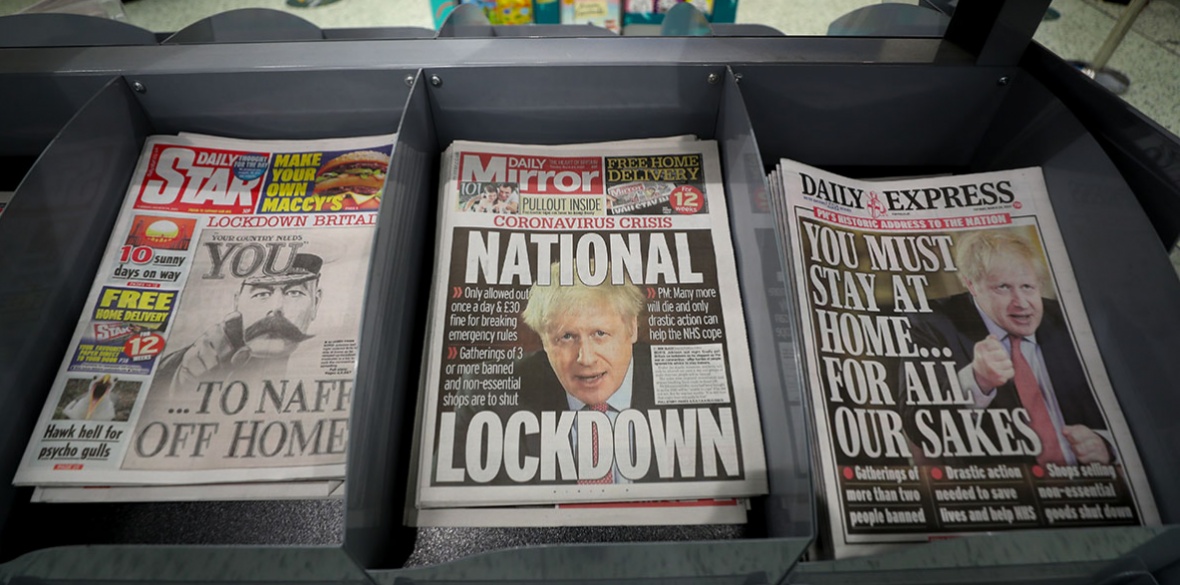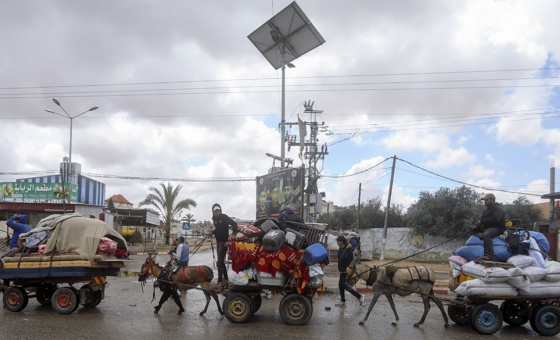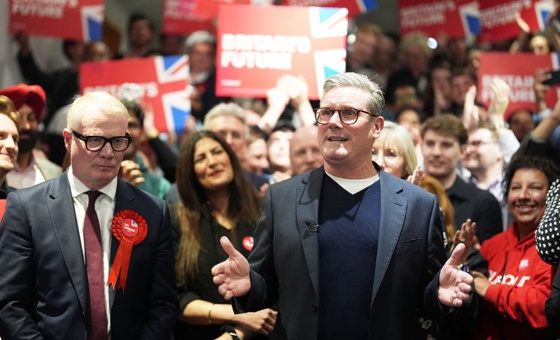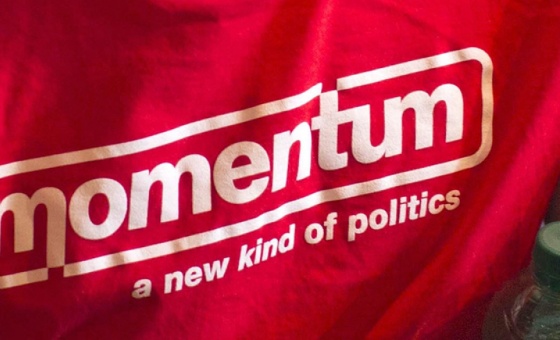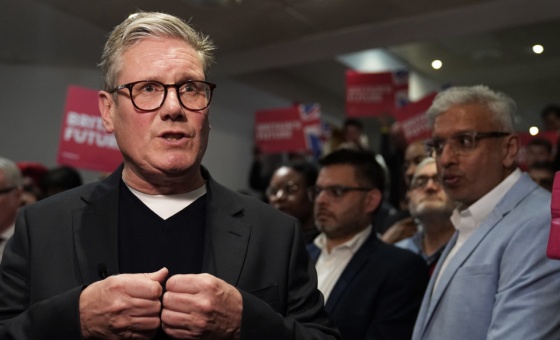This is the last article you can read this month
You can read more article this month
You can read more articles this month
Sorry your limit is up for this month
Reset on:
Please help support the Morning Star by subscribing here
RARELY has a peacetime prime minister struggling with a national emergency been as fortunate as Boris Johnson in being spared the broad sweep of hostile coverage that proved so debilitating to his predecessors.
Johnson has been blessed with a personal storyline tailor-made for the popular press — “From death to paternity” (Daily Mail, April 30) — and Conservative newspapers have remained his stalwart cheerleaders.
In the months ahead, as he tries to steer the country out of lockdown, the shielding that he has enjoyed might well be at risk amid the chaos and contradictions that have bedevilled the country since the start of the pandemic.
Even when the government’s failings in tackling the coronavirus pandemic were glaringly obvious, and should have demanded the full focus of the news media, his ardent admirers in the tabloid press have stood by loyally, resorting to a variety of ploys to deflect attention and entertain readers.
On the day the UK’s death rate exceeded that of Italy and there was a dire need for diversionary tactics, there was no contest when selecting the front-page splash for the Sun and Daily Mail.
They both took full advantage of the Daily Telegraph’s exclusive and well trailed revelations about the personal life of leading epidemiologist Professor Neil Ferguson.
There could hardly have been a more telling juxtaposition of headlines: “UK coronavirus death toll is now the worst in Europe” (Guardian, May 6 2020) was in sharp contrast to “Prof lockdown broke lockdown to get his trousers down” (Sun) and “Professor Lockdown quits over trysts with married lover” (Daily Mail).
When interviewed on Today on Radio Four (May 6), the Telegraph’s associate editor, Camilla Tominey, defended the paper’s decision to publish highly personal information about two visits made to Prof Ferguson’s home by his girlfriend in late March and early April.
On being “confronted with the facts,” she said he had admitted an error of judgement, acknowledged the guidance on social distancing was unequivocal, and made clear he would be standing down from the Scientific Advisory Group for Emergencies (Sage).
Ms Tominey was not challenged on either the source or timing of the story, which was published almost a month after the second visit to his home.
Despite her paper’s more restrained headline — “Lockdown professor steps down after breaking rules to meet married lover” — she couldn’t resist a nod to the Sun’s front page by reminding listeners, “yes, he has been caught with his pants down.”
Telegraph readers had to turn to page seven to find the headline “UK death toll now highest in Europe” above 17 paragraphs of text.
Cheerleading for Boris Johnson has continued apace since his near-death experience and release from intensive care, often sidelining attention from the unfolding calamity in abandoned care homes and the woeful record on testing and the supply of protective equipment.
Tabloid editors defend their wish to engage and amuse readers, to lift the spirits of a nation worried and worn down by endless statistics about infection rates, hospital admissions and a mounting death toll.
Johnson and his media advisers have many allies in the newspaper industry, and together they form a formidable alliance with unquestioned expertise in delivering exclusives and in creating narratives that build up a momentum of their own.
The Mail backed a charity to raise money to buy protective overalls and masks for hospitals and care homes. The launch of its appeal — “Mail’s £1m airlift for NHS heroes” (April 4) — was the start of a campaign that not only directly involved readers but generated stirring headlines.
In the lead-up to the 100th birthday of World War II veteran Captain Tom Moore, there was blanket coverage of his daily walk to raise money for the NHS.
Once he had been hailed a hero by the popular press, his fundraising appeal snowballed, and the tabloids had a heart-warming storyline that could be pushed to the limit: “We salute you” chorused the Sun and Daily Mail (May 1) for an RAF display celebrating an appeal that by then had topped £32 million.
The day before, the Sun’s front page — “Happy birthdays” — had declared there was “Good news at last for Britain” (April 30) as Captain Tom reached his centenary and Johnson’s fiancee Carrie Symonds gave birth to a son.
Ms Symonds’s subsequent release of the first pictures of their baby, which was accompanied by an exclusive interview with the Prime Minister for the Sun on Sunday, were two astutely timed news lines that again succeeded in downplaying the government’s failures and deflecting damaging headlines.
The day after the Guardian led on the stark finding that people living in the poorest areas were dying at twice the rate of those in richest areas (“UK’s corona divide,” May 2), much of the Sundays’ coverage was devoted to uplifting stories about the Prime Minister’s expanding family.
“He’s got daddy’s hair” (Mail on Sunday, May 3, 2020) was the headline over the first picture of Wilfred Lawrie Nicholas Johnson.
The Sun on Sunday used the “Bojo baby” photo in one corner of a front page devoted to the “full amazing story” of Johnson’s fight for life: “Docs were ready for me to die.”
Monday’s Sun exploited Johnson’s “only interview” to the full: “Baby gave me will to live” (May 4).
Yet another weekend of grim headlines had been successfully avoided by a Prime Minister eager and adept at taking full advantage of a personal and family storyline that has strengthened his popularity ratings and that he hopes can be exploited still further in the weeks ahead.
Nicholas Jones was a BBC industrial and political correspondent for 30 years. This article appeared in MediaNorth, quarterly journal of the Campaign for Press & Broadcasting Freedom (North), (CPBF). To sign up to receive future copies of MediaNorth contact cpbfnorth @outlook.com. CPBF North recently published a book, It’s the Media, Stupid, an analysis of media bias and control in the UK. To buy a copy (£11.50 inc P&P) go to http://coldtype.net/MediaNorth.html.
Playing fast and loose with lockdown messages
by Nicholas Jones
Amid the devastation of the coronavirus crisis and a looming economic catastrophe, Boris Johnson and his communication advisers remain wedded to media routines ill-suited to a national emergency.
Deeply entrenched in the Downing Street psyche is an addiction to manipulating the news agenda, a determination come what may to trail announcements in advance and grab the news agenda.
Instead of the well-timed release of clear-cut advice and information, the British public have been left ill-informed and confused by newspaper coverage heavily influenced by Conservative-supporting commentators, columnists and letter writers pushing the business case for the fastest possible easing of lockdown safeguards.
Johnson is as much to blame as his media team because he cannot resist drip-feeding news lines that he knows will delight the Tory tabloids but which all too often tend to disrupt effective management of public messaging.
At Wednesday’s Prime Minister’s Question Time he revealed that in a televised broadcast the following Sunday he would reveal a road map for exiting lockdown and that the government intended to “get going with some of these measures on Monday.“
After seven weeks of lockdown his bald statement cried out for amplification and his media team – who operate collectively under the catch-all guise of “Downing Street/government sources” – couldn’t resist giving journalists every encouragement to nudge the story along at breakneck speed.
One vital “fact” was confirmed in this anonymous Downing Street briefing: the government would be abandoning the “Stay Home” slogan on which it had spent millions of pounds promoting through press and television advertising.
In the Fleet Street terminology of yesteryear, by changing the slogan to “Stay Alert,” the Downing Street spin doctors had given the story ample ‘legs’ to run with.
“Hurrah! Lockdown Freedom Beckons” was the bold claim of the Daily Mail ( May 7 2020) only to be bettered by the Sun’s “Happy Monday” front page.
New freedoms
The new freedoms that were being trailed on the back of the Prime Minister’s initial steer – unlimited exercise and picnics in the park – were subsequently confirmed.
But for health authorities and police forces – and especially for the devolved administrations in Scotland, Wales, and Northern Ireland – anonymously sourced press reports that the Stay Home message was being abandoned caused consternation ahead of a bank holiday weekend and forecasts of fine weather.
In pre-empting Monday’s House of Commons statement with his Sunday televised address, Johnson went for the mass audience – attracting over 27 million viewers – but again there was mixed messaging.
He suggested workers could start returning on Monday morning, even before Parliament had been informed or any safety advice had been published.
A combination of confusion and anger among employers, trade unions and transport undertakings was par for the course for the media team’s mantra of driving the news agenda whatever the cost.
Johnson and his aides were relaxed, safe in the knowledge that the bulk of the Conservative Party was on his side and that the Guardian’s headline – “PM’s lockdown release leaves Britain confused and divided” (May 11 2020) – would be swamped by the uplifting coverage of Johnson’s tabloid cheerleaders.
“We are going to meet again” (Daily Mail, May 12 2020) and “Gran day out” (Sun) were the good news front pages that mattered most of all to the Downing Street spin machine.

